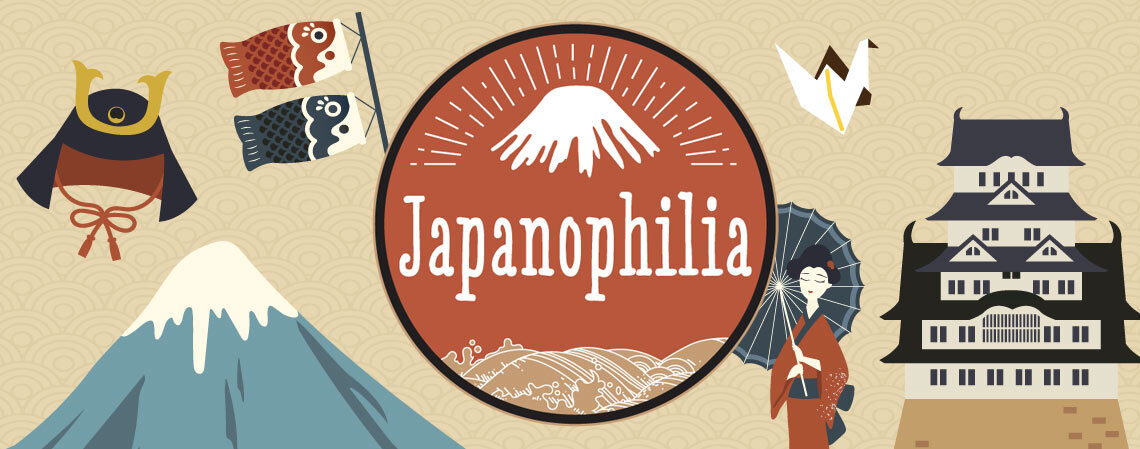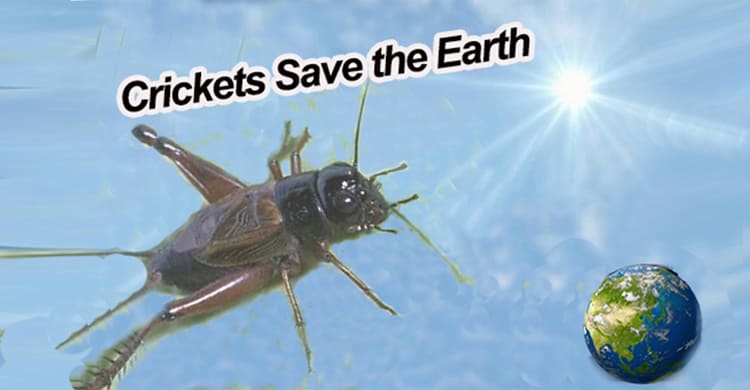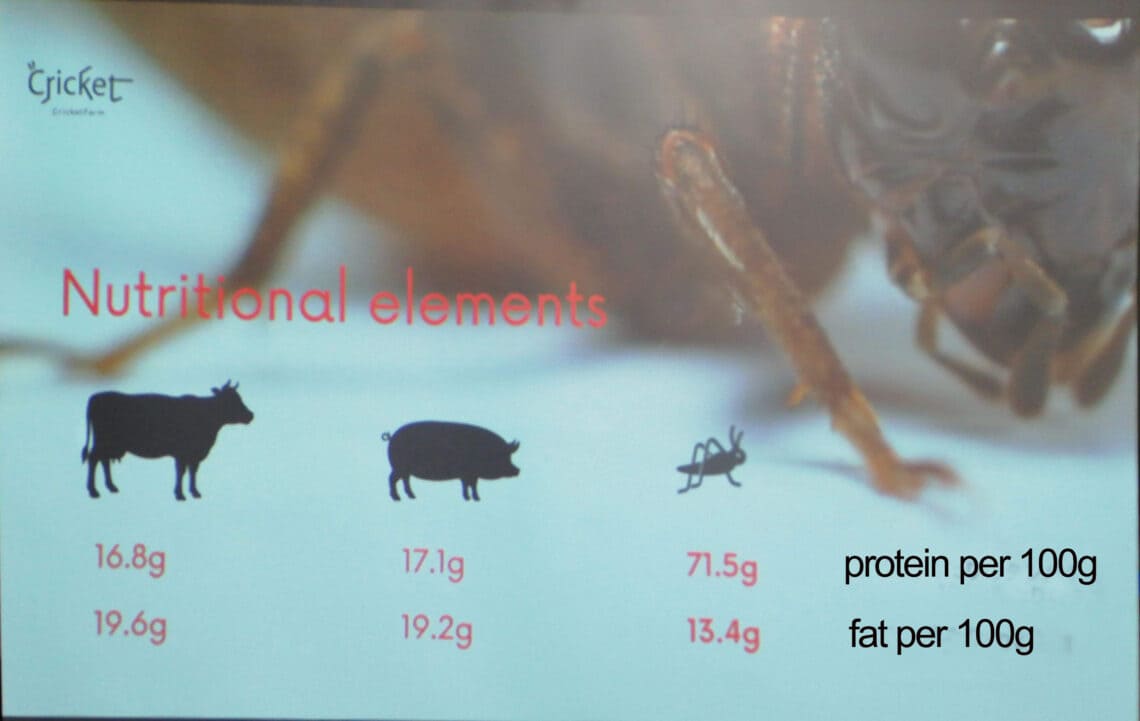Can you eat insects? Or do you feel comfortable eating insects?

Hi, how are you? Today’s theme is “entomophagy (eating insects)”.
Have you ever heard of Entomophagy Market Overview released by FAO(Food and Agriculture Organization of the United Nations)?
It says the global entomophagy market is expected to grow considerably, 2025 will grow which is 14 times faster growth in 2019.
Specifically, in the report published by the Japan Management Association Research Institute in 2020, it will be approximately US$670 in 2025(about100 billion yen as of Nov 2022) .
Contents
- What’s entomophagy?
- History of Insect Eating
- Why is “entomophagy” attracting attention now?
- How about that in Japan?
- What are the insects that support solutions to environmental problems?
- Why were insects no longer edible?
- Great attention to insect food, “Cricket” and why?
- Why are crickets in the spotlight?
- Nutritional value is also a key point of evaluation
- About “CricketFarm”
What’s entomophagy?
The insectivore is a feeder of bee larvae, locusts, and other insects. Larvae and pupae are relatively common, but adult insects and eggs are also eaten.
Insects are eaten in 29 Asian countries and 23 countries in the Americas. At least 527 species of insects are eaten in 36 African countries, and a detailed count of the number of insect species consumed worldwide would amount to 1,400 to 2,000.
History of Insect Eating
In China, there is a description in the “Zhouli” (a Confucian scripture) of entertaining guests with salted termite eggs, and in Europe, there are records of ancient Greeks and Romans eating cicadas and other insects.
The ancient Greek philosopher Aristotle also seems to have eaten cicadas, and he considered cicadas in their pre-hatched state to be the most delicious.
Why is “entomophagy” attracting attention now?
・The use of insects as a food source has gained global attention following a report of FAO in 2013, which stated that by 2050, the world population will exceed 9 billion people and that the food crisis will become more serious.
・In addition to traditional entomophagy, new products are being developed and marketed that do not retain the original form of insects and are less resistant to consumers.
・In the EU, the market is expected to expand with the approval of insects as a food product in 2018.
・The number of companies focusing on the cultivation of edible insects will increase, prices will decrease, and insect diets will become more popular.
How about that in Japan?
As far back as the Jomon period (circa 1400 BC – 10th century BC), research has revealed that people ate insects.
In Japan’s oldest existing dictionary of medicinal herbs, “Honzo Wamei,” written in the Heian period (794-1185), there are known to be references to the eating of locusts.
It is known that locusts were also eaten during the Edo period (1603-1868). One of the most famous encyclopedias of the Edo period describes a seller of kabayaki (broiled locusts), and it appears that locusts were skewered and eaten as kabayaki.
Other foods eaten during the Edo period included gengoro, turtles, and larvae of other insects. Silkworm pupae were also eaten, which is believed to have been eaten as early as the Heian period (794-1185), when sericulture was already practiced.
They were also cooked in various ways, such as boiled, baked, pickled, or made into “Tsukudani (insect’sfood boiled down in soy)”.
Even in the Taisho era (1912-1926), there were a total of 55 species of edible insects. An additional 123 species of insects were used for medicinal purposes.
However, since many of the respondents answered grasshoppers, butterflies, etc., it is thought that the actual number of species was probably much higher.
After World War II, locusts were recommended for food due to food shortages. There are also accounts of rationing of silkworm pupae after they had been harvested at silk mills, as female workers would eat them raw.
It is clear that insects were a valuable source of protein in times of food shortages.
What are the insects that support solutions to environmental problems?
・Insects have been suggested as a potentially important food for humans because they are rich in protein and other nutrients, and because the land and feed required for their cultivation are significantly less than those required for livestock and have a smaller environmental impact.
・Insect food is attracting attention mainly in Europe and the United States, where environmental awareness is high, because of its low environmental impact during production.
Why were insects no longer edible?
The first reason is that people dislike insects as pests, and they are grotesque in appearance.
In fact, the concept of insect pests was born after the start of sedentary farming. Until then, insects were considered to be beyond human control and were dealt with religiously.
For example, cockroaches were only found in places where there was plenty of food for the rich, so they were called scarab beetles and people tried not to kill them.
The second reason is that the cholera outbreak spread the perception that insects are unsanitary. Cholera is transmitted by flies, and campaigns have been launched around the world to get rid of the flies.
Even so, insect food was needed as a valuable source of protein during the period when life was not as rich as after the war in Japan. However, as the economy developed and imports from foreign countries came in at low prices, changes began to appear in eating habits.
Until then, insects that had been eaten to supplement protein became inedible, and only delicious insects remained.
In recent years, however, there has been a gradual boom in eating insects.
On June 4, 2020, MUJI’s Japanese cricket rice crackers went on sale as follows
In addition, a restaurant specializing in insect food has opened, and the degree of attention is increasing year by year.
Great attention to insect food, “Cricket” and why?
Insect food is currently in the limelight from the perspective of aiming for a sustainable society. Among them, the popularity of edible crickets is increasing.
What do crickets taste like? What is the nutritional value? Is it true that powdered crickets are easier to eat? And so on, I tried to get to the truth about cricket food.
In modern times, livestock production is one of the causes of environmental degradation. Livestock production alone accounts for about 15% of human-induced greenhouse gas emissions.
Therefore, insects are now attracting attention as an earth-friendly food that has a lighter environmental impact than general livestock and is an earth-friendly food for the future.
In addition, insects are highly nutritious and rich in protein, so they are expected to be a food item that we will definitely want to incorporate in the future.
Among them, crickets are gaining popularity all over the world because they are easy to grow and have a good taste.
Why are crickets in the spotlight?
★ High fertility and year-round production
Crickets are highly fecund insects. One study even estimated that 1,000 crickets can grow to 477 trillion in one year.
Since they lay a large amount of eggs at a time and quickly become adults, they can be mass-produced in a short period of time.
In addition, high-density breeding techniques have recently been established, enabling efficient mass production.
Since they can be produced all year round, regardless of the season, a stable supply is now possible, which is expected to contribute to solving the food problem.
★ Food loss can be fed and bred
Because omnivorous crickets have few food restrictions, they can be bred to feed on food loss that occurs around the world.
In Japan, approximately 6 million tons of food loss is generated annually*, which translates to one bowl of rice per person per day.
Reusing this food loss as food for crickets not only lightens the environmental burden, but also has the economic benefit of eliminating the cost of feeding the crickets.
Crickets, which can utilize food loss as bait, are a recycling-oriented food that produces new protein from food that would otherwise be thrown away, and are considered to be a “circular food” that will be required to build a sustainable society in the future.
Nutritional value is also a key point of evaluation
★ Over 70% Protein By Weight
Cricket powder, a powdered form of dried crickets, contains about 76% protein by weight. This is about three times the amount of meat or fish, making cricket powder an efficient protein food.
It also contains all nine essential amino acids, which are essential for the formation and maintenance of a healthy body.
Essential amino acids are not produced in the body and must be obtained from the diet, but by consuming foods made with crickets, you can supplement your diet with a good balance of essential amino acids.
★ Rich in Omega 3 and Omega 6
Crickets contain a good balance of various nutrients such as fat, zinc, iron, calcium, magnesium, and vitamins as well as protein (essential amino acids). They are also rich in omega-3 and omega-6, which are effective in lowering LDL cholesterol in the blood.
These two nutrients are also known as essential fatty acids and cannot be produced by the body. They are a food that health-conscious people should especially take in as soon as possible.
In fact, let’s take a look at the “CricketFarm” to get a feel of how crickets are bred
About “CricketFarm”
In August 2021, CricketFarm was established in Okaya City, Nagano Prefecture where it’s situated in central part of Japan.
The Suwa area, located in the center of Nagano Prefecture, has a long-established culture of eating insects, and Okaya City, which has a history of prosperity from silkworms, has also eaten chrysalis as a source of protein.
It has established a base in the Suwa area, which has long had a culture of eating insects, and aim to produce 2,336,000 insects (about 2.3 tons) per year to introduce the culture of eating insects from Nagano Prefecture to the rest of the country.
The following year, in August 2020, they opened a cricket farm in the neighboring city of Chino, which you can also visit to see how crickets are cultured as follows,
You can visit there on line, https://cricketfarm.base.shop/
You can also visit there to have a direct look on every Saturday and Sunday.
Address of CricketFarm: 11400-1104 Tamagawa, Chino-shi(city), Nagano-ken (prefecture)
Tel:0266-75-2113 (only Saturday & Sunday)
FAX:0266-75-2149
Email:info@cricketfarm.co.jp
Finally, when I (this blog’s poster) visited CricketFarm for a tour of the breeding site, the autumn leaves which look like burning into my eyes in the factory premises and the nearby shrine were very beautiful, so I would like to share them with you to the followings,
Looking forward to your visit, thanks




















